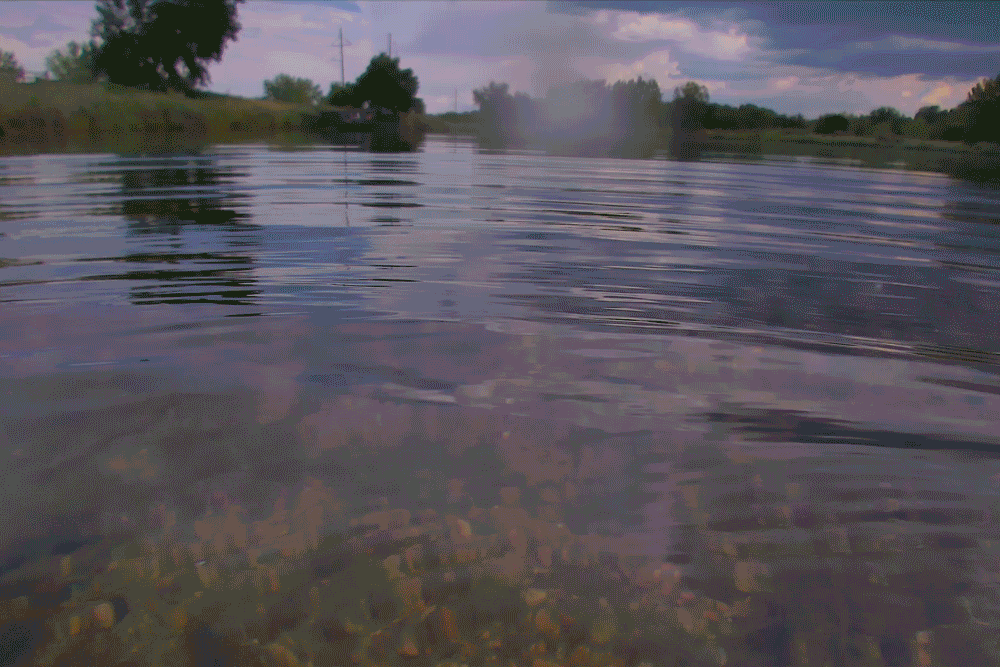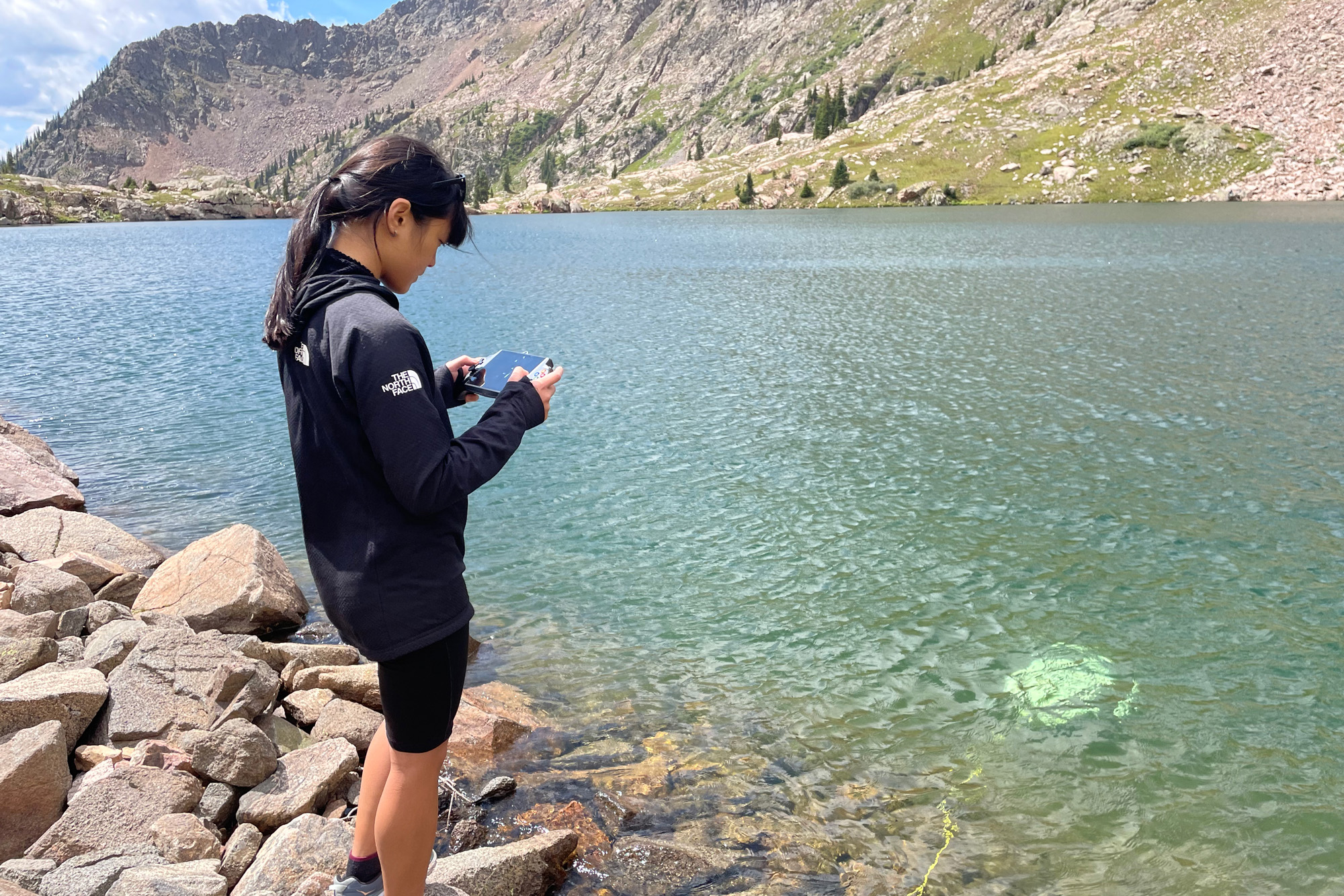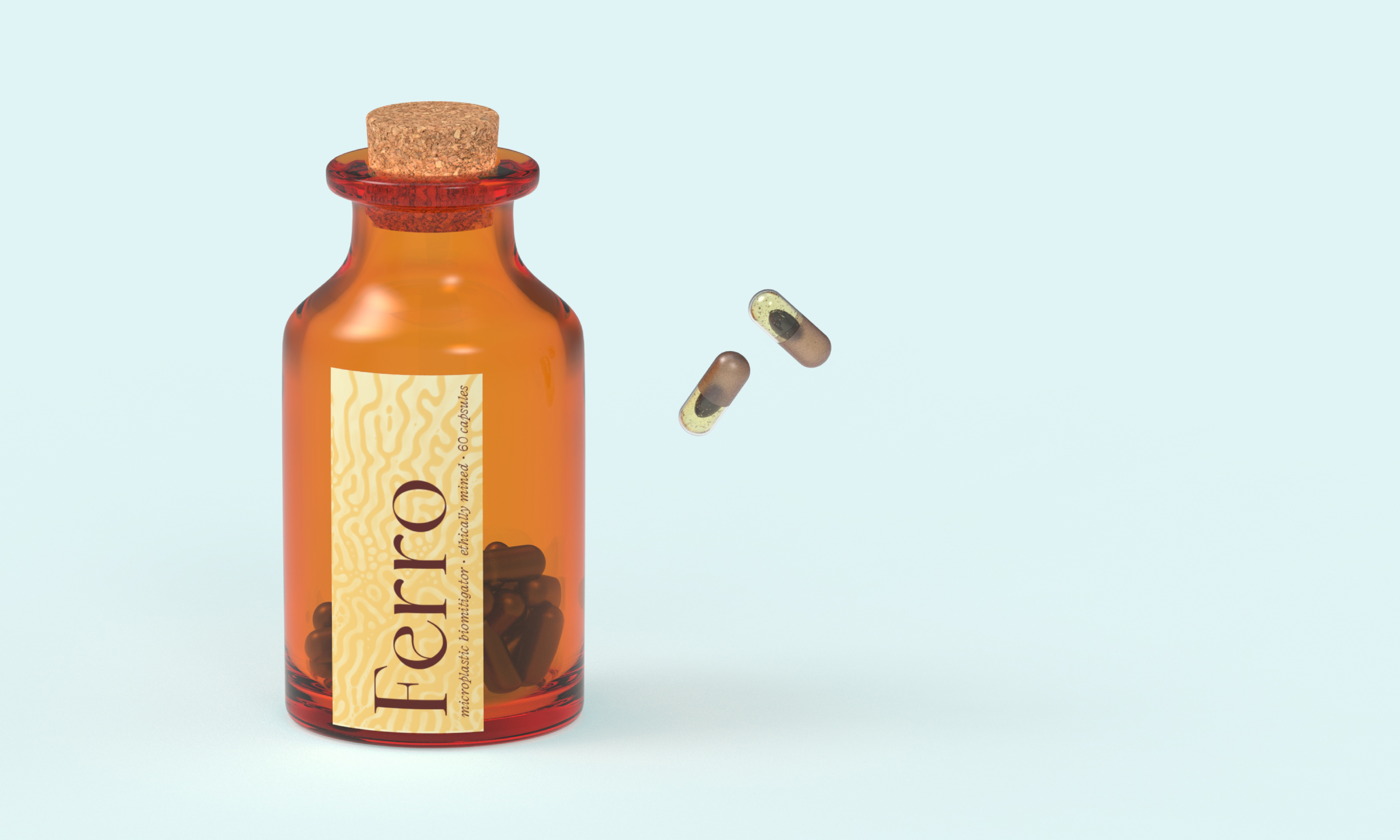
There are significant barriers to addressing the microplastics problem in seafood: lack of standardized detection tools and monitoring protocol; lack of studies about specific biological consequences; lack of technologies and mandates to actively remove the microplastics already in circulation. These obstacles span across industries and sectors, each compounding the hesitation of the other.
Through this small portal into the speculative future, Ferro is a company that creates commercial products for seafood consumers to manage microplastic removal in their own bodies and homes. Inspired by Fionn Ferreira’s use of magnets and ferrofluid to separate microplastics from water, artefacts like the Biomitigation Supplements and Bivalve Purification Kit add specificity to abstract debates and punted hypotheticals. In the absence of robust international safety infrastructure, what fills the vacuum? When commercial microplastic mitigation becomes a money-maker, will corporations protect that source of wealth? What happens when freedom from microplastic contamination becomes a lifestyle choice rather than a human right and public health imperative?
Through this small portal into the speculative future, Ferro is a company that creates commercial products for seafood consumers to manage microplastic removal in their own bodies and homes. Inspired by Fionn Ferreira’s use of magnets and ferrofluid to separate microplastics from water, artefacts like the Biomitigation Supplements and Bivalve Purification Kit add specificity to abstract debates and punted hypotheticals. In the absence of robust international safety infrastructure, what fills the vacuum? When commercial microplastic mitigation becomes a money-maker, will corporations protect that source of wealth? What happens when freedom from microplastic contamination becomes a lifestyle choice rather than a human right and public health imperative?
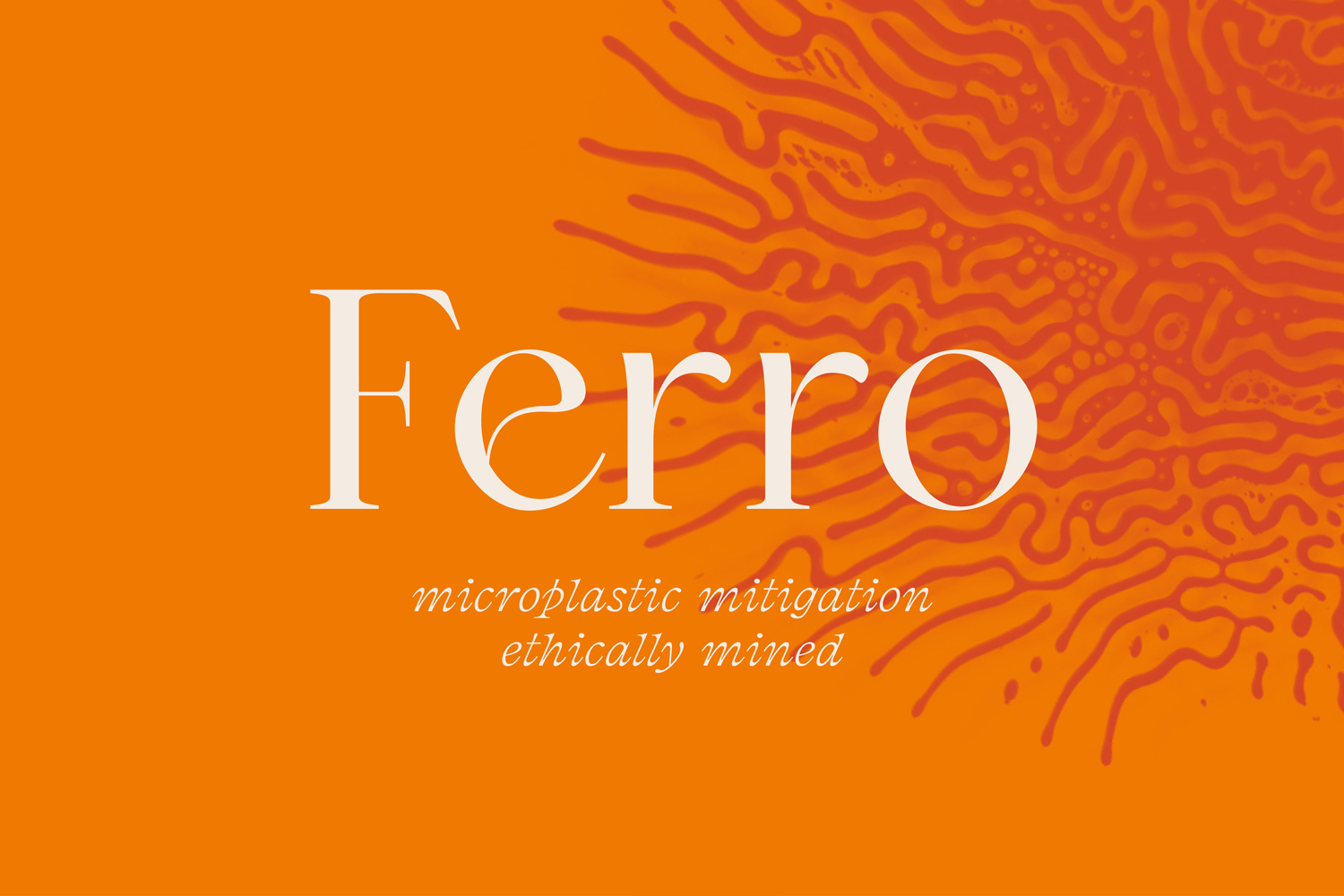
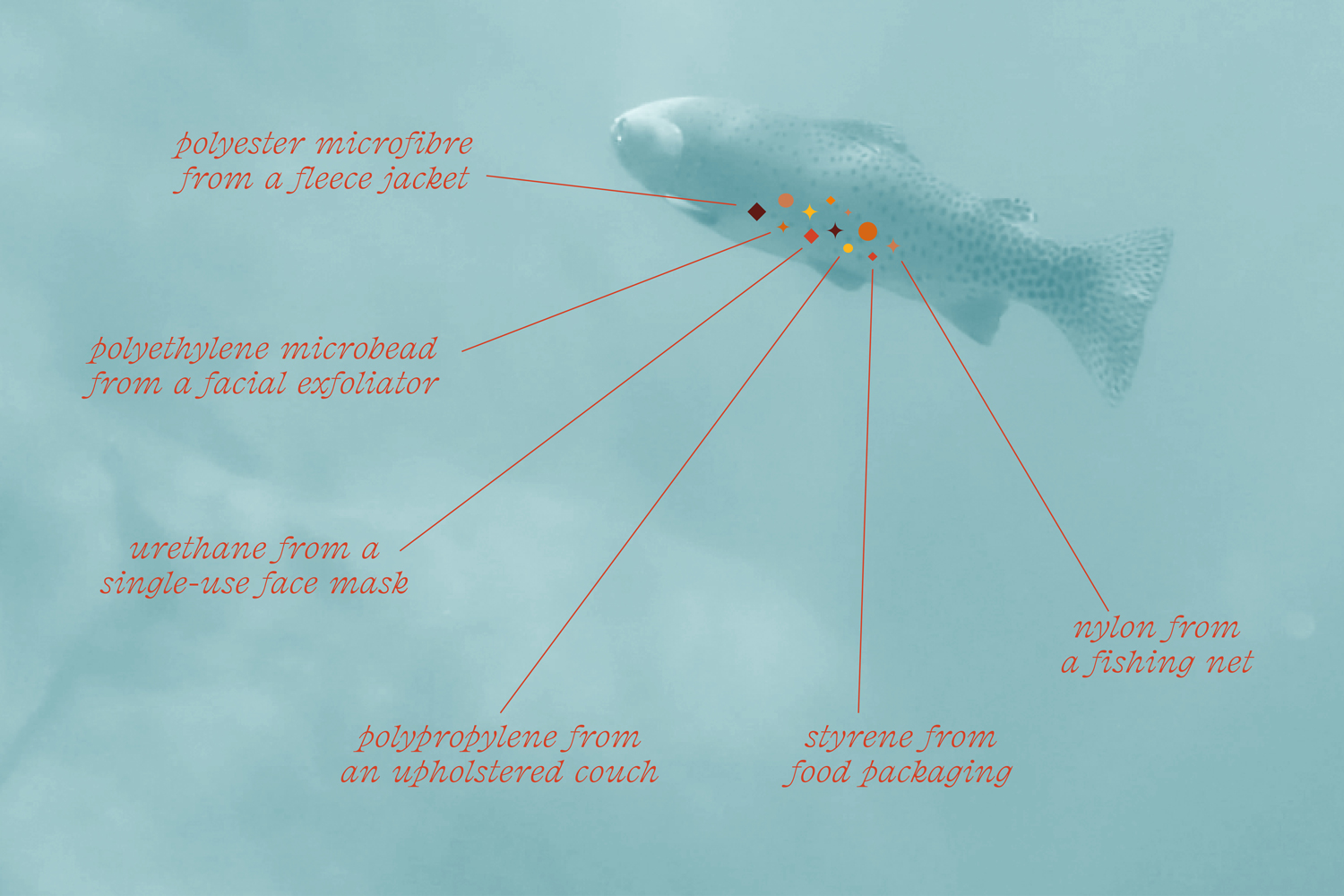



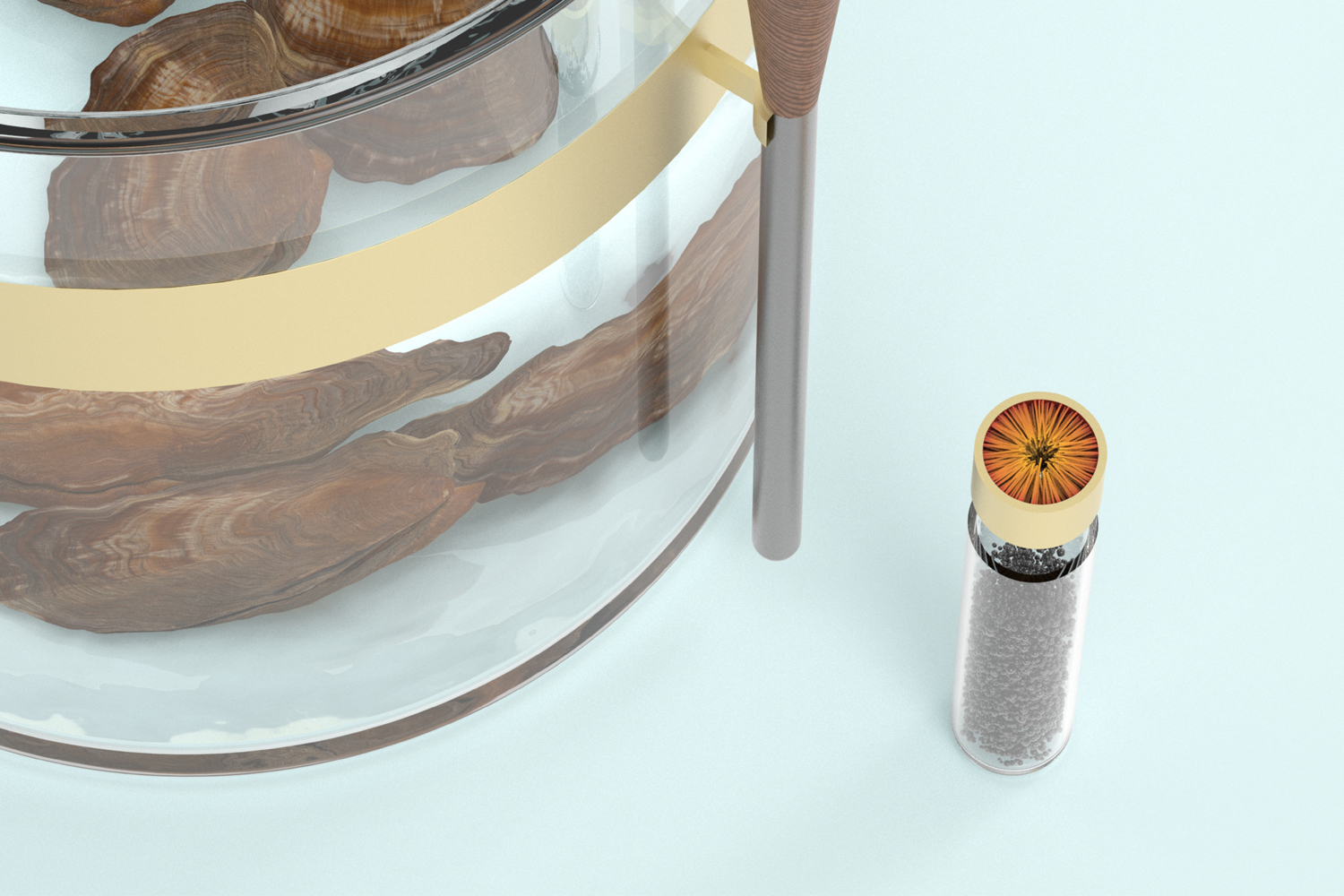
This exploration was conducted with the underwater drone provided to finalists in the Conservation X Labs Trident Prize. Rainwater tested in Rocky Mountain National Park has shown presence of microplastics, obliterating the idea that legally protected or physically remote areas are somehow less susceptible to anthropogenic pollution. Even the wild trout in this alpine lake at 11,362 ft are exposed to billions of microscopic synthetic fibers traveling through runoffs and rainclouds.
